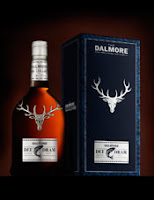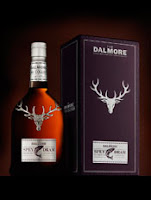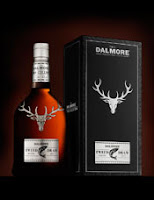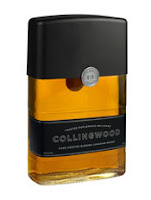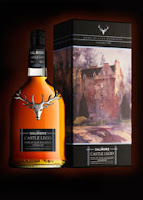It is that time of the year, when the weather is still wintery and bleak in London and we are just all hoping that spring comes early this year.
For anyone familiar with the whisky event circuit that makes it way around the UK, this marks the time for the global phenomena of Whisky Live to roll its way into London. This year saw the event appearing in the central location of The Honourable Artillery Company Army in the heart of the City of London. The impressive building is an historic 18th Century mansion set in a six acre garden.
Like all recent Whisky Live events in London, this means making your way through numerous security gates to get into the building’s entrance hall. The venue had a far cozier feel than in previous years and everyone attending seemed to be in high spirits as a result. This year saw a number of new faces exhibiting including the
Teerenpeli Finnish whisky company and the
The Scotch Malt Whisky Society, as well as many famous names such as Glenrothes, The Glenlivet, Whyte & Mackay (including The Dalmore), Classic Malts from Diageo (including Talisker and Caol Ila) and Berry Bros & Rudd.
We were lucky enough to try a wide range of whiskies at the event and thought we'd share a few of our favourites and a few special treats that we were lucky enough to try.
Tyrconnell 10 years old Madeira Finish and 10 years old Sherry FinishTyrconnell Irish single malt whiskey is quite unique for an Irish whiskey with 100% malted barley distilled in small batches in a copper pot still. Produced by
Cooley Distillery, the Tyrconnell brand was named after a legendary Irish racehorse that won with 100 to 1 odds, giving rise to the equine logo you find on Tyrconnell's bottles.
The Madeira finish whiskey at is aged in American oak before being given four months in Madeira casks before bottling. It is a rich fruity whiskey with chocolate notes and lots of rum and raisin ice-cream characteristics, with just enough woodiness to keep the dried fruit flavours in balance.
The sister whiskey finished in used Sherry casks for around 6 months after maturation in American oak also has an ABV of 46%. It is a rich amber colour with notes of honey and vanilla balanced into a rich and full spiced orange palate.
Connemara Turf MórLike the Tyrconnell, this Irish single malt whiskey is produced by the Cooley distillery. While this is a whiskey we have tasted before (see notes for
Turf Mór) we reacquainted ourselves with this delightful peaty dram and had to include it on the list of favourites. At 58.2% ABV this a hearty dram with cereal like peatiness balanced with citrus freshness and a long sweet smokey finish.
Bowmore 16 years old Port MaturedFrom the oldest of the eight distilleries currently operating on the island of Islay in Scotland, comes this somewhat experimental 'limited edition' bottling (well, only a mere 18,000 bottles!). Bottled at 53.1% ABV after spending 16 years in Port pipe casks, this whisky is a dark ruby red colour with rounded soft smokiness, rich red fruits like dark berries, burnt cereals, and warming earthy spice. The cool fact about this whisky is that it was matured in the famous
Bowmore vaults - below sea level!
Benriach SolsticeBenriach is one of the few distilleries in Scotland that is currently independently owned and has a reputation for having no fear when it comes to experimenting with flavours in whisky. Launched on the shortest day of the year in 2010, Benriach Solstice was created for the cold depths of the Scottish winter. It uses heavily-peated malted barley to produce a spirit that is then matured in ex-bourbon casks before being finished in aged Tawny Port casks sourced from Portugal's Douro region. Matured for 15 years with an ABV of 50% this is a whisky bursting with character. Sweet biscuit peatiness is met with fresh warming citrus on the nose while the warming smoke and spiciness comes through on the palate. We thought this whisky was delicious and certainly lives up to its warming reputation.
Benriach HorizonsA 12 year-old triple-distilled malt scotch whisky which was newly released for the winter of 2010/2011. This unusual Speyside whisky was an experiment in the late 1990s for Benriach as they tried some limited production runs of triple-distilled whisky, compared to most single malt scotch whiskies which are distilled twice. Bottled with an ABV of 50%. This whisky has us dividing opinions as to whether we this works or not. This whisky offered a buttery nutty nose with a clean fresh taste that matched the nose and gave some creamy sweetness to the mix. The split of opinion came down to the fullness of the whisky on the palate which was argued between being too thin and just right.
Compass Box Flaming Heart (Third edition - 10th Anniversary bottling)No arguments here, Flaming Heart took first place in Dave Broom's blind tasting masterclass on Friday night, and the queues to get anywhere near Compass Box's stand was a tribute to this whisky.
Compass Box is a boutique independent whisky producer with an ethos to buy whisky from a small number of distilleries and then craft them together into their own unique whiskies. Flaming Heart is a one-off, limited release produced from whisky from seven distilleries located in the northern Highlands and Islands and bottled at 48.9% ABV. This is a surprising whisky that blends warming fruit, peppery spices and smokiness together without any one overpowering the other. Add a long moreish finish and it does makes sense why this whisky had more people than just us raving about it.
Compass Box HedonismOne that we have tried earlier but had the pleasure of revisiting (see our review for
Hedonism). Hedonism is unusual for a scotch whisky being made from 100% grain whisky. Not a drop of single malt is present in this vatting. The use of quite old whisky makes the standard release of this whisky amazing value, typically over 20 years in age and in this bottling between 14 and 29 years. In the glass we experienced sweet vanilla and cereal grain alongside oak, coconut and honey, but not forgetting toffee, warm gingery spices. As you can tell from that shortened version of our tasting list this is a complex whisky that at 43% ABV is remarkably easy to drink and enjoy.
Glenfiddich Snow PhoenixA very limited bottling with a quaint back-story. Following the extreme snow storms and cold weather faced by much of Scotland in January 2010, a number of Glenfiddich's warehouses were damaged due to extreme weight of snow that was resting on their roofs. Many casks were destroyed in the fallen buildings but a few lucky casks remained intact and were safely protected by a layer of snow for up to four months. While the distillery staff tried frantically to save as many casks as possible, the extreme cold was having its influence on the casks. Hence these whiskies became named 'Snow Phoenix' - the whisky that rises from the snow. The varying ages of casks including some very old whisky aged in both American oak and Oloroso sherry casks, leading to the decision to bottle at cask strength (47.6% ABV) as a non-aged single malt. Snow Phoenix is golden whisky with fresh apples and blossoms combined with cinnamon sugar on the nose, a dry woodiness initially to taste but warming into dried citrus, chocolate and warm spiceness on a long moreish finish.
Glenfiddich Age of DiscoveryThis bottling marks the start of a new series from
Glenfiddich. This new bottling that is due to hit the travel retail market in Spring 2011, with a general retail release at some time towards the end of the year, most likely October. Named to celebrate the pioneering nature of the 15th century Portuguese merchants, this 19 years old bottling is aged in both European and American oak (around 15% to 85% ratio) then finished in Madeira casks sourced from Henriques and Henrique, an independent Madeira company. With a nose full of sweet caramel sugar and warming citrus notes akin to dried orange peel, this whisky has surprising subtleness on the palate with sweet fudge and butterscotch meeting gentle fruitiness. The sweetness is successfully balanced with dryness to make Age of Discovery one of the more impressive cask finished whiskies.
Talisker 8 years old (sample)Until the 1980's Talisker's standard bottling was produced as an 8 years old whisky, after which time Talisker gave into the overall customer demand for whiskies aged 10 years on more. With whisky drinkers becoming more savy and experimental, Talisker are getting back to their roots and experimenting with this more youthful whisky expression again. The sample we were lucky enough to try was from the first batch that was only bottled on Tuesday earlier in the week, and yes, Mr Taxman, the duty was paid. Bottled at 62.4% and bourbon cask matured, this whisky was a delightful dram and really did offer the characteristics that are so frequently associated with
Talisker - gentle peatiness, smoke and warming spiciness with citrus freshness and the notable fresh saltiness to remind you that this whisky is made on a small island.
Glendronach 31years old 'Grandeur'Glendronach Distillery prides itself on producing richly sherried single malt whiskies of inimitable and individual character, and this dram certainly delivers on that front. This whisky came as a delight and a surprise from a distillery that has been described as a sleeping giant.
Full of rich chocolate, coffee and nuts, dried fruits and berries, with a warming syrupy feel, this whisky almost asks to be poured over icecream, but that would have requirement the difficult task of prying it out of someone's hands. You would never guess that this is a cask strength whisky at 48.9% given its smoothness. Definitely an after dinner whisky that should be supped with care and enjoyment.
Glen Moray Chardonnay cask (due to be released in July)Glen Moray is a bit of quiet force. Along side of their compact standard range, Glen Moray are bringing out a few interesting and quite exciting cask finish bottlings. This year we got to try the delicious Port finish bottling which is rich and full of dried fruits, rich nuts, toffee and a peppery spice that balances nicely with the richness. The outstanding dram for us, however, was one which has not yet been released and while we were in the lucky position of being able to get a preview, we went for it. This whisky was fresh, tangy and floral with moreish buttery vanilla notes that kept this dram rich but still fresh and balanced on the palate. Slightly biscuity with fresh green fruits.
We must thank everyone that kindly allowed us to try many a sample, but mostly send a big hello to everyone we met (new faces and old) that made such an enjoyable few days. Hope to see you there next year.
 Inish Turk Beg Maiden Voyage is a new premium Irish single malt whiskey. It is named after the private island of Inish Turk Beg (which translates as ‘the small island of the wild boar’ from Gaelic), which lies off the west Irish coast of County Mayo. It is one of the largest islands of over 300 in the beautiful Clew Bay, which is regarded as one of Ireland’s greatest natural phenomena. The bay is rumoured to have historically been a thriving area for the illicit distilling of whiskey and poitín (pronounced pot-cheen), due to its remote location. Poitín is a traditional Irish spirit that is made from grain or potatoes and is notoriously one of the strongest and most potent produced anywhere in the world, often coming in at 80-95% ABV!
Inish Turk Beg Maiden Voyage is a new premium Irish single malt whiskey. It is named after the private island of Inish Turk Beg (which translates as ‘the small island of the wild boar’ from Gaelic), which lies off the west Irish coast of County Mayo. It is one of the largest islands of over 300 in the beautiful Clew Bay, which is regarded as one of Ireland’s greatest natural phenomena. The bay is rumoured to have historically been a thriving area for the illicit distilling of whiskey and poitín (pronounced pot-cheen), due to its remote location. Poitín is a traditional Irish spirit that is made from grain or potatoes and is notoriously one of the strongest and most potent produced anywhere in the world, often coming in at 80-95% ABV!









